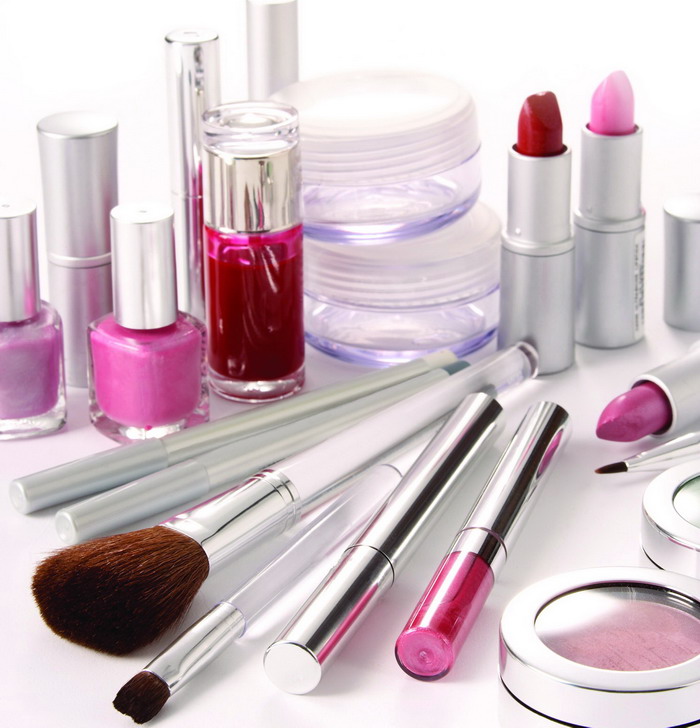Ulta Salon, Cosmetics & Fragrance, a fast-growing beauty and cosmetics retailer, is building a chain of supersized health and beauty stores around the country. Like rival Sephora stores, they’re brightly lit, sleek and colorful, and they carry thousands of both high-end and middle-market brands of cosmetics, fragrances and skin and hair-care products. But Ulta stores also offer hair salon services, manicures, pedicures, massages, waxing and other beauty and spa treatments. “The more services you offer,” says M.J. Munsell, a principal at Callison in Seattle, “the more reasons you give the shopper to come in and the more opportunity for her to access different brands. And that’s the name of the game in the beauty business.”
There’s a whole range of health and beauty retailers, from department and specialty stores to drugstores and supermarkets, trying to capture the time, tastes and pocketbooks of a nearly $10 billion market. But that market is at a crossroads. Once regarded as “recession-proof,” it’s being challenged by the biggest worldwide economic downturn in 75 years.
Mix and Match
The mass channels – drugstores, supermarkets and discounters – have traditionally depended on brand loyalty to drive their health and beauty business. The products are arranged in aisles of open-sell shelving with a small amount of P-O-S promotion. The supposition is that the woman knows what she wants and appreciates the efficiency of plucking it off the shelf without the need to interact with a hard-selling salesperson.
The department stores, on the other hand, have always thrived on that interaction – makeovers, consultations, advice – as a way to get women in from the mall and into their well-lit, nicely scented, brightly merchandised departments. Samples and gift packs make shoppers feel they’re getting something extra. And sitting down with a “beauty consultant” exposes them to new products and applications. “If you get her into a chair, engaging with a salesperson,” says Munsell, “you make her familiar with a product she didn’t think she needed when she walked into the store.”
Specialty retailers, like Ulta and Sephora, have built their success on blending the prestige and mass brands – the industry calls it “masstige” – and by combining, as well, the open sell of drugstores and supermarkets and the personalized service of department stores. Even as other retailers struggled, Ulta’s fourth quarter net sales increased 10.4 percent and it announced plans to open 35 new stores in 2009. Revenue at rival Sephora, a unit of LVMH, increased, as well.
Pretty Persuasion
What has traditionally boosted this industry in past downturns was “the lipstick effect”: the phenomenon that cosmetic sales increase during times of economic uncertainty, when women invest in smaller, feel-good purchases as they’re forced to forgo bigger luxury items. But this time, people’s entire shopping and consuming habits have changed – where they shop, how much money they spend and how much time – and all those lipsticks, mascaras, lotions, gels, fragrances and hair-care products are being affected. Impulse purchases aren’t as impulsive anymore and “needs” are being reassessed. What’s called the “mass” brands in this sector – lower-priced, widely distributed brands like L’Oréal, Neutrogena, Nivea, Cover Girl and Olay – are becoming more attractive to shoppers on a budget. The “prestige” brands, such as Chanel, Clinique, Estée Lauder, Lancôme and Prescriptives, are fighting for their place in the market.
Advertisement
“A woman today has to be convinced to spend $70 on a small tube of eye cream, even if it does guarantee to reduce wrinkles,” says Christian Davies, vp and managing creative director at FRCH Design Worldwide (Cincinnati). “She’s still going to buy product. But if she can find 20 to 30 percent of her beauty needs at Target or Kroger, she’ll shop there.”
The drugstores and supermarkets have always offered wide selection, accessibility and the relatively low prices of the mass brands. But some drug retailers are now tinkering with the formula. CVS Caremark Corp., the nation’s largest drugstore chain, is opening concept stores called Beauty 360 either adjacent to or nestled within CVS drug stores. The stores, ranging between 2500 and 4000 square feet, carry a broader range of brands not found in the regular CVS stores.
They’re also considering adding certain express services such as manicures and hand massages. Beauty 360’s tie-in to CVS gives it the opportunity for up to 7000 locations around the country, more than any other competitor. Sephora and Ulta, by contrast, have only about 200 to 300 locations in the U.S.
The mass merchandisers are also trying to upgrade their presentations, to appeal to a new customer (perhaps a former department store shopper) who might be coming into a Target or Walmart store primarily for groceries or children’s clothes. Target is testing a new beauty concept in a handful of stores, uniting its cosmetics, skincare and hair-care categories in a revamped, more stylish department. A Target spokesperson says the new design presents “a more visual environment, which invites [shoppers] to browse a mix of everyday essentials and exclusive beauty brands.”
As the various retail channels reposition themselves to keep or grow their segment of this marketplace, they’re buoyed by the sense that they have a receptive audience just looking for a reason to shop. “Women will find ways to pamper themselves,” says Munsell. “They can wear last year’s clothes and last year’s shoes, but they’ll always justify a need to replenish their cosmetics drawer.”


 Photo Gallery1 week ago
Photo Gallery1 week ago
 Headlines3 days ago
Headlines3 days ago
 Headlines1 week ago
Headlines1 week ago
 Headlines1 week ago
Headlines1 week ago
 Headlines1 week ago
Headlines1 week ago
 Designer Dozen1 week ago
Designer Dozen1 week ago
 Headlines1 week ago
Headlines1 week ago
 Headlines1 week ago
Headlines1 week ago















